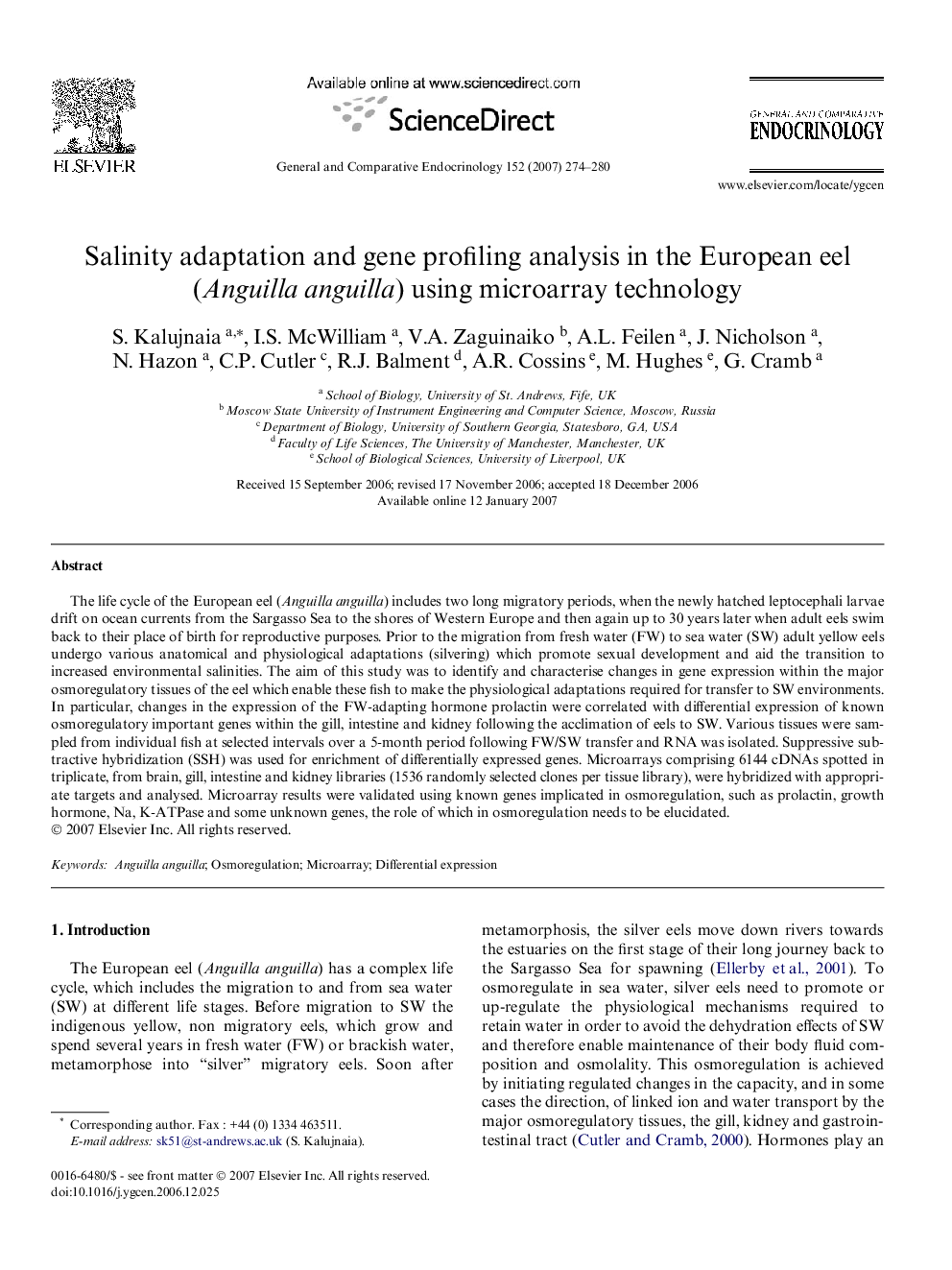| Article ID | Journal | Published Year | Pages | File Type |
|---|---|---|---|---|
| 2801957 | General and Comparative Endocrinology | 2007 | 7 Pages |
The life cycle of the European eel (Anguilla anguilla) includes two long migratory periods, when the newly hatched leptocephali larvae drift on ocean currents from the Sargasso Sea to the shores of Western Europe and then again up to 30 years later when adult eels swim back to their place of birth for reproductive purposes. Prior to the migration from fresh water (FW) to sea water (SW) adult yellow eels undergo various anatomical and physiological adaptations (silvering) which promote sexual development and aid the transition to increased environmental salinities. The aim of this study was to identify and characterise changes in gene expression within the major osmoregulatory tissues of the eel which enable these fish to make the physiological adaptations required for transfer to SW environments. In particular, changes in the expression of the FW-adapting hormone prolactin were correlated with differential expression of known osmoregulatory important genes within the gill, intestine and kidney following the acclimation of eels to SW. Various tissues were sampled from individual fish at selected intervals over a 5-month period following FW/SW transfer and RNA was isolated. Suppressive subtractive hybridization (SSH) was used for enrichment of differentially expressed genes. Microarrays comprising 6144 cDNAs spotted in triplicate, from brain, gill, intestine and kidney libraries (1536 randomly selected clones per tissue library), were hybridized with appropriate targets and analysed. Microarray results were validated using known genes implicated in osmoregulation, such as prolactin, growth hormone, Na, K-ATPase and some unknown genes, the role of which in osmoregulation needs to be elucidated.
